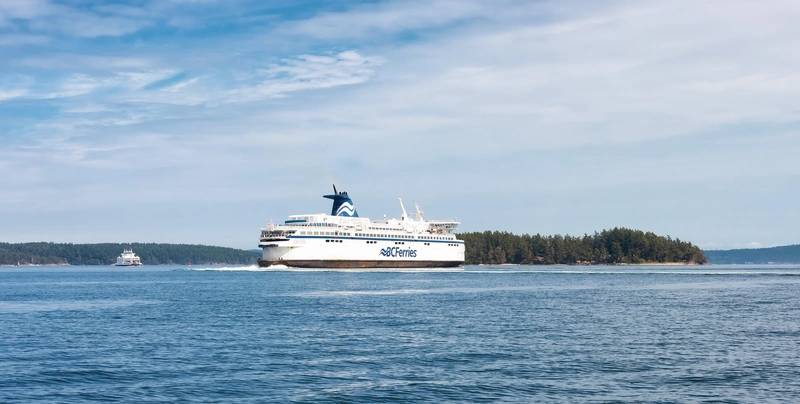BC Ferries to Build New Vessels in Two Phases
Canadian ferry operator BC Ferries announced it is moving forward with a program to build a series of new vessels for its busiest routes.
The company said on Monday it has put out a request for proposals (RFP) to pre-qualified shipyards for the construction of the first five of seven new vessels in its New Major Vessels (NMV) project, with contracts expected to be awarded in Spring 2025, subject to approval from the Ferry Commissioner. The first ship is intended to start service in 2029, with all five in service by 2031.

The remaining two vessels will be built in a later phase, with the aim to award shipbuilding contracts by 2033, which would mean those ships would enter service by approximately 2037.
Additionally, work will be planned to extend the operational life of two existing C-Class vessels, the Queen of Surrey and the Queen of Oak Bay.
The fleet upgrade program marks the company’s largest ever capital investment and aims to replace aging vessels, address projected population growth and better meet customer expectations, BC Ferries said.
“Our customers have been clear – they expect reliable service and affordable fares, and this approach directly addresses both,” said Nicolas Jimenez, President and CEO of BC Ferries. “By adopting a phased strategy, we can responsibly increase capacity and resilience while carefully managing our investments to minimize fare pressures for customers. Additionally, the flexibility to refine the final two vessels based on insights from the initial builds and operational performance ensures we deliver the best possible service for the future.”
BC Ferries has designed the new vessels in collaboration with naval architecture and ship design firm LMG Marin to be able to carry up to 360 standard-sized vehicles and 2,100 passengers, marking a significant capacity increase from the 250-310 vehicles and 1,200-1,500 passengers that the retiring vessels currently accommodate. They will also be among the largest double-ended ferries in the world, with significantly improved energy efficiency and propulsion systems designed for both future flexibility and environmentally sustainable operations, BC Ferries said.

“If approved by the Ferry Commissioner, these new vessels will allow us to deliver an improved and more reliable travel experience for our passengers,” adds Ed Hooper, Executive Director of Shipbuilding at BC Ferries. “These new vessels will be quieter and cleaner than the vessels they replace, allowing us to achieve a significant reduction in our corporate greenhouse gas emissions. They will move more people and vehicles, more efficiently, helping us maintain current schedules and contributing to reduced wait times. Importantly, the addition of another ship to the fleet will bring the total to 12 vessels on BC Ferries’ major routes, helping us keep pace with customer demand and projected population growth along the coast.”
This summer, BC Ferries saw record-breaking passenger and vehicle traffic, with over 8,040,000 passengers and over 3,150,000 vehicles transported between June 1 and August 31. Over the past few years, the company has consistently set new records for passenger volume. Without these new vessels, major route capacity during the peak season will be exceeded by 2035, leading to longer waits for residents and negative impacts on local economies, particularly in goods delivery and tourism.
